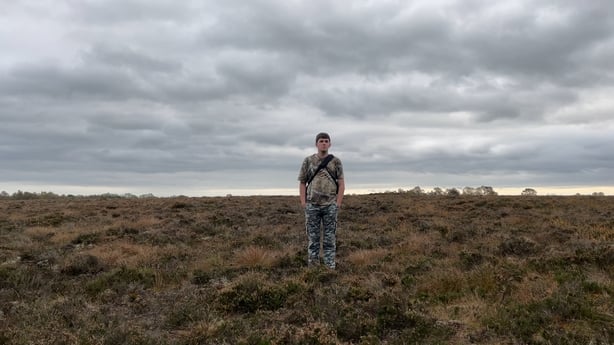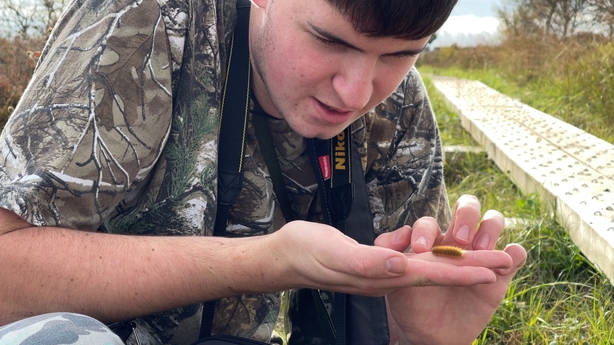The countdown is on to the beginning of one of the most important summits of our lifetime.
COP26, the 26th Conference of the Parties to the United Nations Framework Convention on Climate Change, takes place in Glasgow from 31 October to 12 November.
Amid concerns that the conference might be the last chance to put the world on track to constrain global warming, we asked several young people to send a message to concentrate the minds of the leaders who will gather in Scotland from Sunday.
Today, 17-year-old Tim Sullivan, from Co Meath, shares his views on the biodiversity crisis being stoked by the effects of climate change.
Tim spends a lot of his time at Girley Bog near his home. He has been visiting the bog since he was a child and witnessing the changes in biodiversity there, and in other areas of the countryside, has saddened him.
"As I grew older, I started to notice some of the issues the bog faces. One of the main issues is habitat destruction," he said. "It's quite sad to see things that used to be quite common, are lost."

Girley Bog is one of the few remaining raised bogs in County Meath and an increasingly rare environment in Ireland.
While Tim is relieved that the bog is no longer being cut, he wants to see the cutting of turf scaled back in other areas too.
"When you cut turf, it’s a double hit to the environment," he explained. "A cut bog has very little biodiversity, there’s none of the plants or moss to support the insect life, which supports everything else.
"When you are cutting turf, you destroy the habitat. And then you burn the turf which also emits gasses that create global warming."
Thanks to community-led conservation efforts, Girley Bog is being repopulated with sphagnum moss plants.
Tim said: "The ecosystem is being allowed to recover and it’s amazing for biodiversity and for birdwatching. The cuckoo breeds here every spring, yet you don’t see them in the countryside anymore.
"If we look at nature and mimic nature, we can coexist with it peacefully, we are a part of nature, as much as we like to remove ourselves from it.
"This only applies to people who want to drink clean water and breathe fresh air. Oxygen comes from plants and the ocean, the whole food chain, we’re all linked back to natural resources at the end of it."

Tim’s message to world leaders at COP26 is to "look at more sustainable agricultural practices and live as part of nature, not apart from nature."
"Instead of planting non-native trees, plant native trees, instead of clearing hedges we should leave more hedges," he said.
"It all starts with native trees because the native moths, which a lot of our birds and mammals rely on as well, they’ve evolved to lay on certain plants, their food plant or host plant, they won’t lay on tropical plants or exotic plants that people put in their gardens, so even though it may look nice, it’s quite useless to wildlife.
"You start to see a decline in bird populations in gardens with a lot of plants that are not native. But with native plants, it supports itself. It is a system. It’s been doing it for thousands of years, but it's been interrupted, we’re preventing the wheel of nature from spinning."







